The St. Michael the Archangel Monastery is situated 3 km away from the village of Bilintsi, West Bulgaria. The place is really romantic through the early summer, when its stone walls are covered with green. However, it is quite abandoned, although it was declared a monument of culture of national significance back in 1969 due to its murals. Today it is really hard to reach the temple and one can do it on foot or by jeep only.
“Every time I go there, I have to struggle with the nettle, in order to make way for the tourists with something found on the spot – a spade, a paddle or a simple stick. Things are getting worse each year,” says mountain guide Stanoy Arabadjiev.
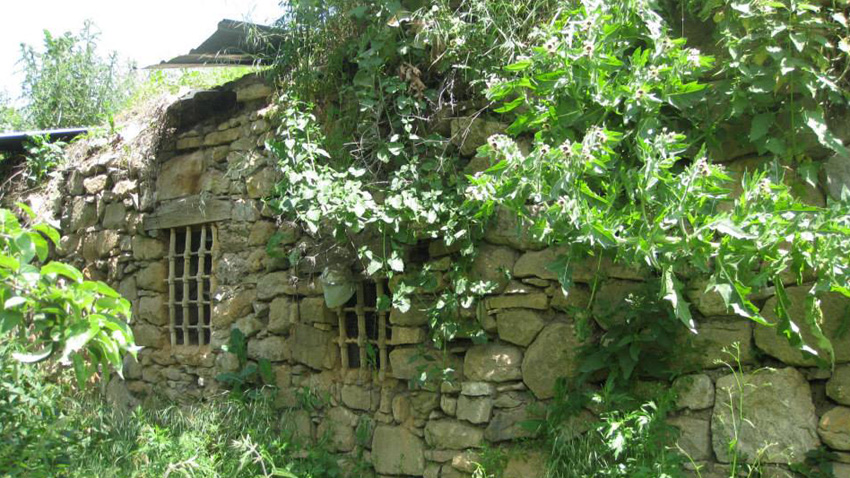
The church, part of the ground floor and the wall – that is what’s left from what used to be a temple once. Moreover:
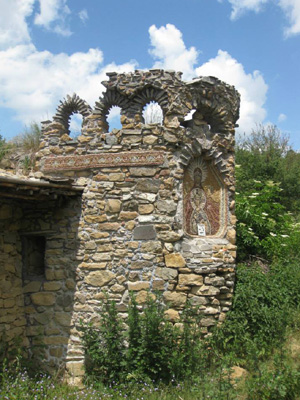 “Unfortunately no one would move a finger to preserve those frescoes. They were painted over once again by an insane monk who lived in the monastery for 3 – 4 years. He knew how to paint, but ruined the layer underneath, the original frescoes being reason why the monastery had been proclaimed a monument of culture. The crosses of the monks buried there have been removed. The throne’s stones are scattered around the woods. Everyone says: ”No money!”, but no one says: “Let’s preserve it!”. The Renaissance spirit is gone,” says Aniela Asenova, an ethnographic researcher from the town of Breznik, adding with resentment that the temple is fully open and the numerous books kept inside are now gone.
“Unfortunately no one would move a finger to preserve those frescoes. They were painted over once again by an insane monk who lived in the monastery for 3 – 4 years. He knew how to paint, but ruined the layer underneath, the original frescoes being reason why the monastery had been proclaimed a monument of culture. The crosses of the monks buried there have been removed. The throne’s stones are scattered around the woods. Everyone says: ”No money!”, but no one says: “Let’s preserve it!”. The Renaissance spirit is gone,” says Aniela Asenova, an ethnographic researcher from the town of Breznik, adding with resentment that the temple is fully open and the numerous books kept inside are now gone.
Historian Kalina Mincheva from the Prof. Ivan Duichev Center for Slavonic–Byzantine Studies tells us more about the monastery:
“Architectural analyses show that the temple was built back in the 15 – 16th c. In the 17th c. it was renewed and completed in the western direction. The architecture is typical for the period – a small nave and apse church. It testifies on the will of the Bulgarians back then to find funding for the construction and renovation of the temple – something we find difficult to do today…”
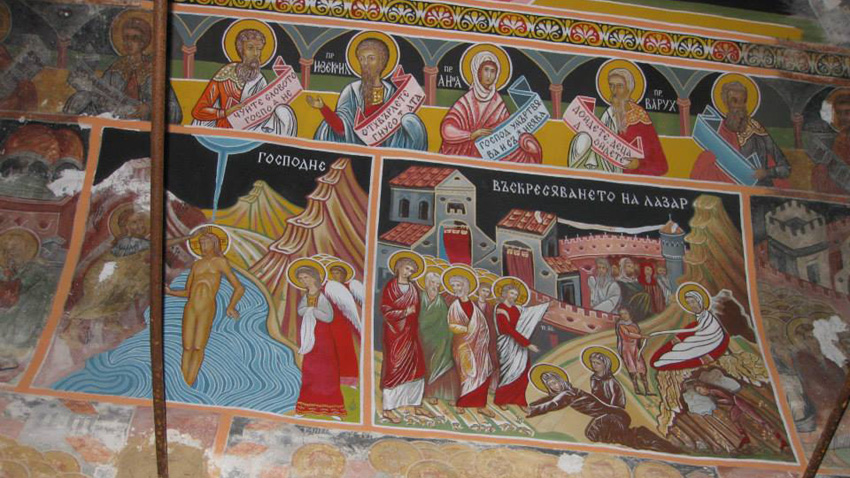
“The earliest written testimony on the Bilinski Monastery’s existence can be found in Russian archives and it is dated 1587. Then Archdeacon Stefan from the temple was included into the mission of the Kolasyisk Metropolitan Visarion near Moscow.”
The mission also involved an abbot from the St. Joakim Osogovski Monastery, now situated in Macedonia. The archive reads that the metropolitan asked for money for the Osogovo Monastery, harmed by an earthquake. Russian incunabular books have been found in the monastery’s library, which suggests that the contact with Russia was somehow continued. The existence of a church school in the18th c. is known.
Kalina Mincheva visited the monastery back in 2006:
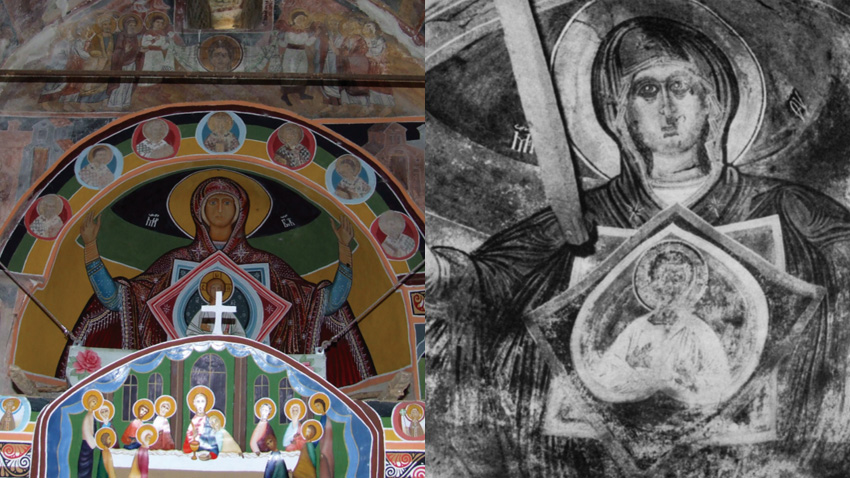
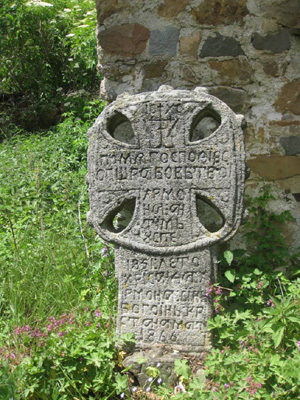 “The worst thing was that the old murals could be barely seen at the expense of their “refreshment”. The whole looked like illustrations from a Russian children's book - the figures and bright colors. There were two novices there and a monk who refused to talk to us. They had no water or electricity. They got water from the nearby brook and they shopped in Breznik once a month. They had used the stines of the monastery to build their own cells. They wanted to take care of the temple but unfortunately had no knowledge how to do it. A group of scientists had gone there a year or two before us and had at least stopped the “refreshing” activities.
“The worst thing was that the old murals could be barely seen at the expense of their “refreshment”. The whole looked like illustrations from a Russian children's book - the figures and bright colors. There were two novices there and a monk who refused to talk to us. They had no water or electricity. They got water from the nearby brook and they shopped in Breznik once a month. They had used the stines of the monastery to build their own cells. They wanted to take care of the temple but unfortunately had no knowledge how to do it. A group of scientists had gone there a year or two before us and had at least stopped the “refreshing” activities.
For example -in the apse a very interesting image of the Virgin and Child called “Shirshaya Nebes”, located in a heart-shaped decoration medallion no longer exists as the monk had painted new icon of the Virgin with very bright colors with acrylic paints. It’s a pity that the bright paints of the monk have destroyed for good most of the murals, as the previous layer cannot be restored, according to experts in the area…”
English version: Zhivko Stanchev
Today, The Bulgarian Orthodox Church honors the memory of Saint John the Baptist, also known as Saint John the Forerunner, because he prepared people for the coming of the Savior. The day dedicated to Saint John the Baptist, known in Bulgaria as..
On January 6, the Bulgarian Orthodox Church is marking Epiphany. According to the Bible, on this day John the Baptist baptized Jesus Christ in the Jordan River. Traditionally, a festive Epiphany liturgy is held in churches, water is blessed, and then..
The fighting for Sofia within the framework of the Russo-Turkish War (1877-1878) began on December 25, 1877. On January 3, 1878, the city's commandant Osman Nuri Pasha began to withdraw from Sofia. His plans to set the city on fire were thwarted..
Meatfare Sunday in 2025 will be remembered as a major celebration for the Bulgarian Orthodox Church and the entire Bulgarian community in the United..
After nearly 35 years, the Bulgarian Orthodox Church Community in London has its own church in the central part of the British capital, in close proximity..

+359 2 9336 661
